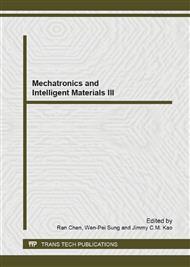p.254
p.258
p.262
p.266
p.270
p.274
p.279
p.284
p.292
Study on Atmospheric Pressure Plasma Processing of Fused Silica
Abstract:
In order to get ultra-smooth surface without subsurface damage efficiently for fused silica, the atmospheric pressure plasma processing (APPP) is developed. It is based on chemical reaction between active radicals excited by plasma and workpiece surface atoms, so the subsurface damage caused by contact stress can be avoided and atomic-level precision machining can be achieved. In this paper, the influence on material removal function by the key factors of APPP including the flow rate of reaction gases, input power, and processing distance are discussed. In addition, by the regression model a quantitative mathematical model of the material removal function of the atmospheric pressure plasma processing on fused silica is established. And this model is verified by experimental data.
Info:
Periodical:
Pages:
270-273
Citation:
Online since:
June 2013
Authors:
Price:
Сopyright:
© 2013 Trans Tech Publications Ltd. All Rights Reserved
Share:
Citation:


